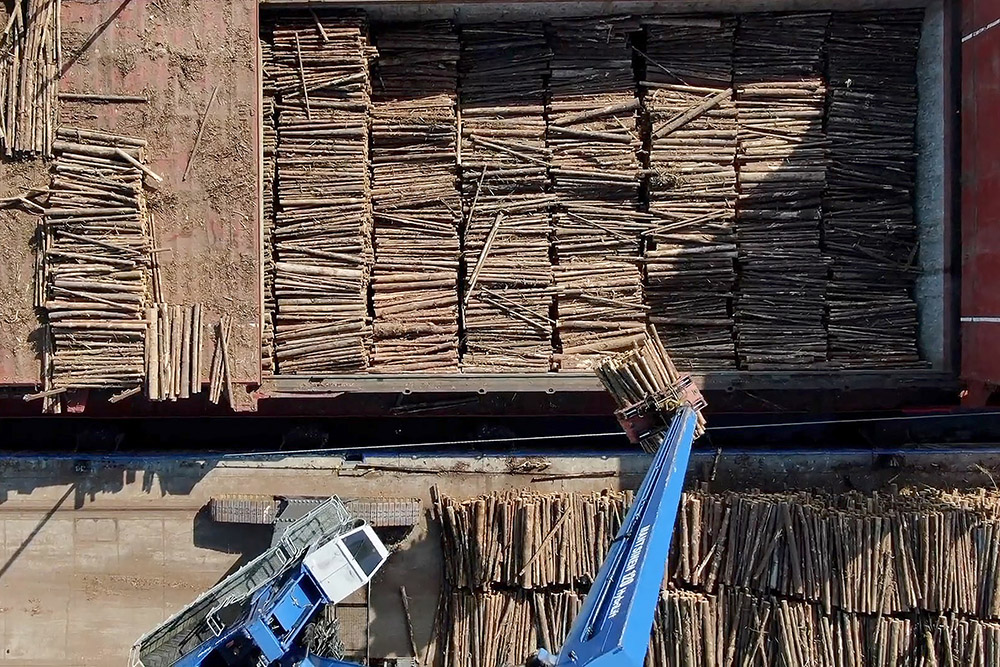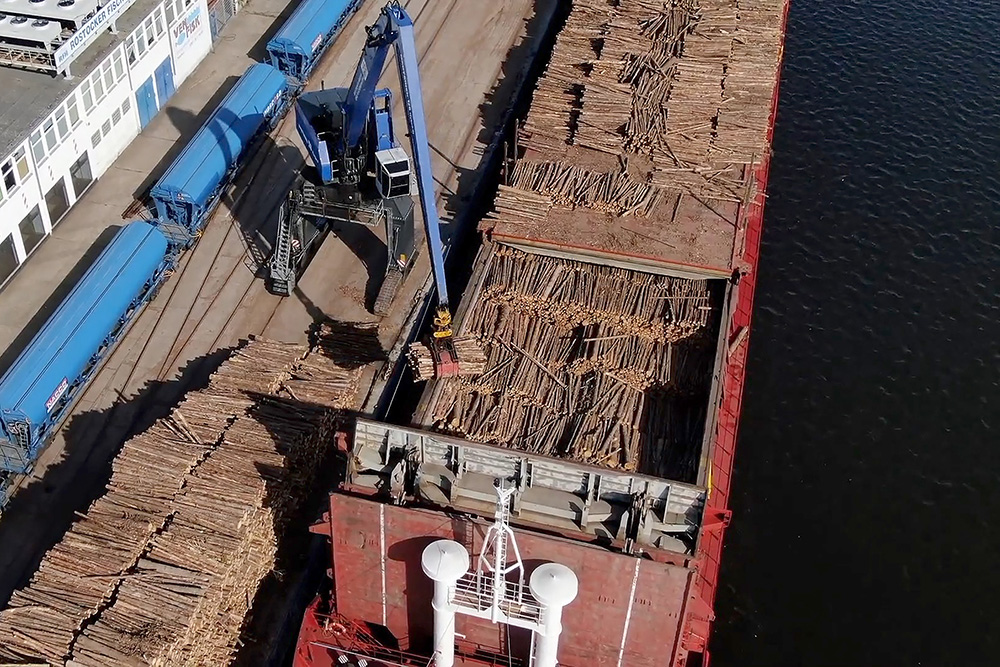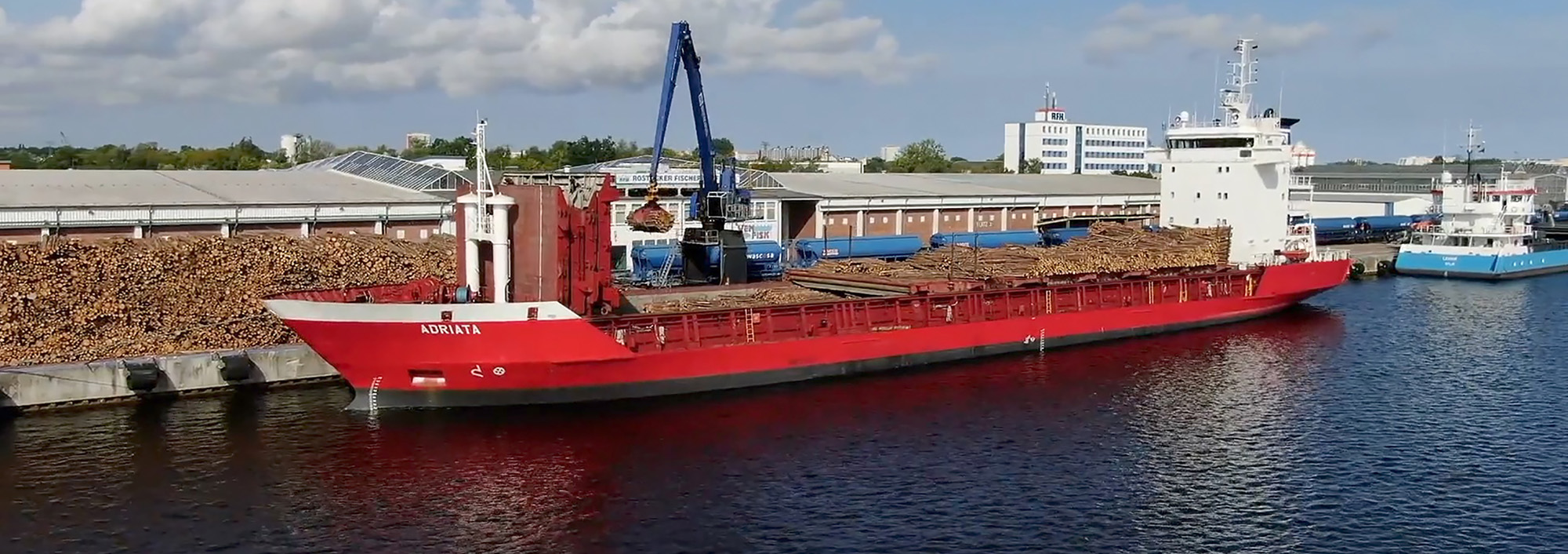Enhanced quayside safety in the handling of timber shipments
Fraunhofer IGD and Rostock Fracht- und Fischereihafen GmbH develop acoustic warning system for loading operations
Fraunhofer IGD has developed a system for enhanced safety during loading operations in industrial ports. A warning signal informs the port authority in real time if elements of the cargo fall into the water during loading and thus pose a potential risk to other users of the shipping channel.

Some 400,000 solid cubic meters of timber are loaded for export in Rostock’s freight and fishing port every year, with operations continuing around the clock. Individual logs occasionally fall into the water during transfer, which then constitute a hazard for other vessels on the Warnow estuary. In order to reduce the risk to shipping traffic, Rostock Fracht- und Fischereihafen GmbH and the Fraunhofer Institute for Computer Graphics Research IGD have collaborated on the development and testing of an acoustic warning system.
In the event that cargo hits the water, a warning signal is now transmitted directly to the dispatcher in the port authority building. Acoustic signal processing and the use of artificial intelligence enable the dispatcher to initiate immediate salvage measures. Ronald Schulz, general manager at Rostock Fracht- und Fischereihafen GmbH, explains the benefits of such a system: “We are situated very close to the official fairway. For this reason, we have to make sure that we don’t let any driftwood get into the main channel, and we have to react immediately if cargo cuts loose. This is especially challenging at dusk or at night, when the crane operator may fail to notice an individual log falling into the water during loading.”
The team at Fraunhofer IGD has developed a solution for such an occurrence. Two underwater microphones (so-called “hydrophones”) monitor several hundred meters of the quayside. As soon as they detect a noise, a supporting AI (artificial intelligence) application determines whether it signifies loose cargo or some other cause. The challenge here was to train and optimize the AI algorithms, for which purpose a large quantity of data was recorded during initial field tests. However, for the monitoring system to run smoothly, the team at Rostock’s freight and fishing port still had to find a solution for data transmission. A combination of fiber optics, copper cable and directional radio now transmits the warning signal from the quay to the port manager or dispatcher stationed a good kilometer away at port headquarters.
The system was developed as part of the Uniport 4.0 project funded by the German Federal Ministry of Transport and is now gradually being introduced in practice. Schulz is convinced that the system developed in collaboration with Fraunhofer IGD has not only enhanced safety in his own port operations, but could also benefit other users: “The system can be deployed in all ports – large and small. Wherever there is a similar initial situation and the quayside needs to be secured, acoustic signal processing is clearly a major asset.” Currently, the team at Rostock’s freight and fishing port is working on the final integration into the terminal operating software.
Fraunhofer IGD in Rostock develops smart applications and systems for companies and their suppliers operating in the blue economy. With its maritime digitization expertise, the institute offers companies in this sector significant efficiency and quality advantages in global markets and enables them to comply with legal requirements, to fulfill individual maritime sustainability goals and to realize opportunities for new business models.

 Fraunhofer Institute for Computer Graphics Research IGD
Fraunhofer Institute for Computer Graphics Research IGD